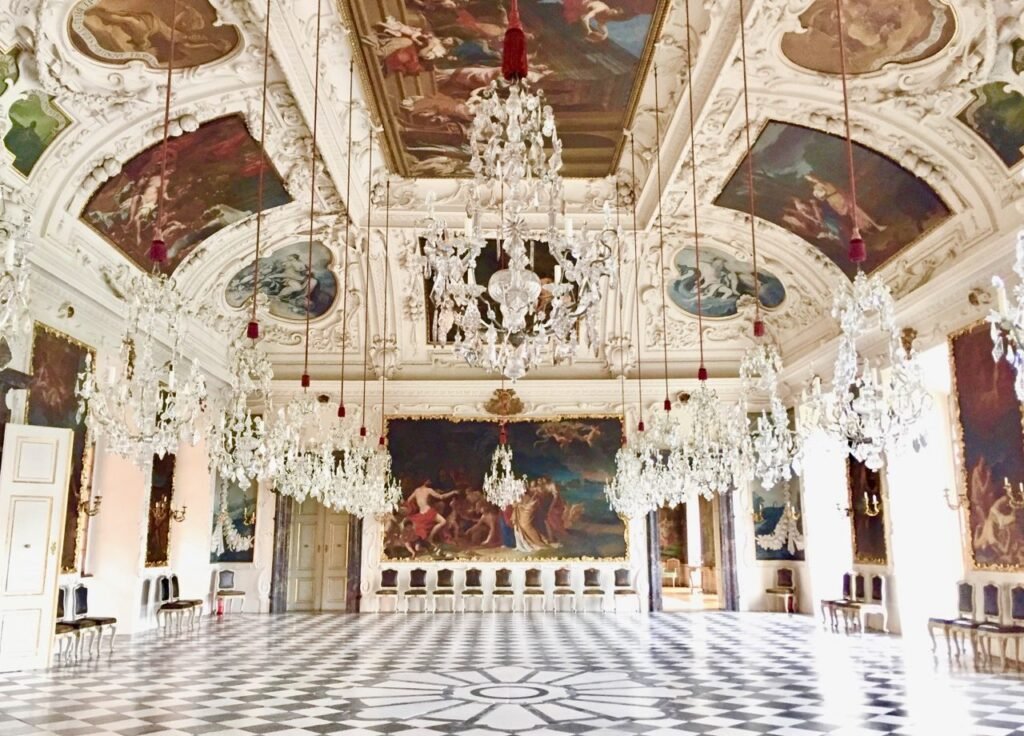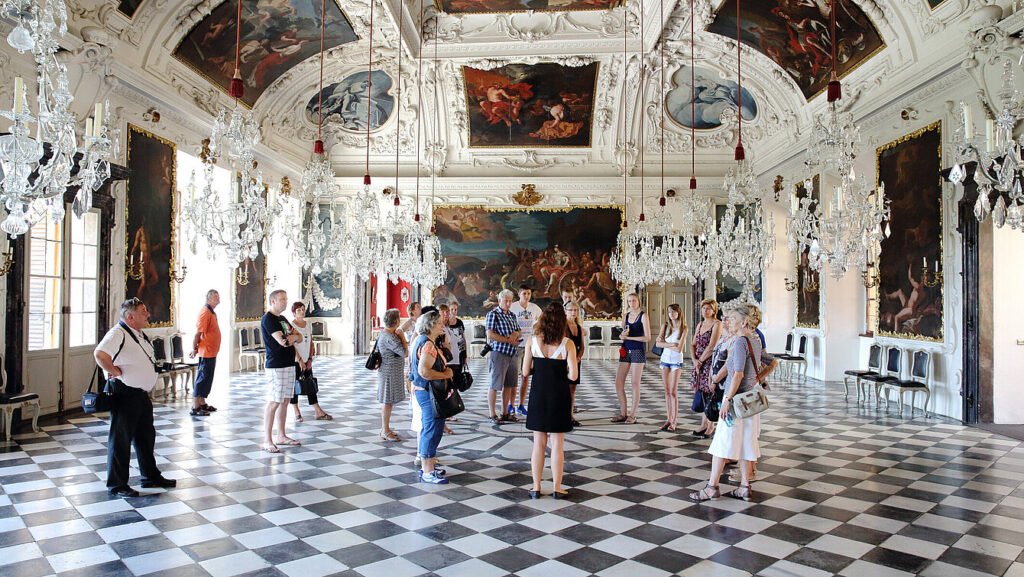In the cultural city of Graz, the capital of Styria, stands one of Austria’s most magnificent and historically rich palaces—Eggenberg Palace (Schloss Eggenberg). Known for its remarkable baroque architecture, lush gardens, and symbolic design, the palace is more than just a historic residence; it is a masterpiece that reflects the power and vision of one of Austria’s most influential noble families. Recognized as a UNESCO World Heritage Site, Eggenberg Palace is a must-visit for travelers who want to explore Graz’s imperial elegance and cultural treasures.
A Noble Legacy
Eggenberg Palace was built in the 17th century for Hans Ulrich von Eggenberg, a close advisor to the Holy Roman Emperor Ferdinand II. Designed by the renowned court architect Giovanni Pietro de Pomis, the palace served as both a residence and a symbol of the Eggenberg family’s wealth and influence.
What makes the palace extraordinary is the concept behind its construction: it was designed to represent the cosmos and the passing of time. Every architectural element—from the number of windows to the arrangement of rooms—was carefully planned to mirror astronomical and calendrical systems, making the palace a unique fusion of art, science, and symbolism.
Architectural and Symbolic Splendor
The palace is a four-winged structure with imposing towers at each corner, surrounding a central courtyard. Its design embodies harmony and symmetry, essential principles of baroque architecture.
One of the most fascinating features is the palace’s 365 windows, symbolizing the days of the year. It also contains 24 state rooms, representing the hours of the day, and 52 doors, marking the weeks in a year. The result is a living architectural calendar that demonstrates the fusion of art, science, and philosophy of the 17th century.
Inside, visitors are dazzled by the Planetary Room, the jewel of the palace. Its ceilings are covered with richly painted baroque frescoes that depict mythological and astronomical themes, symbolizing the harmony of the universe. Other state rooms, with ornate stucco, lavish chandeliers, and detailed furnishings, transport visitors into the world of Styrian nobility.

The Palace Gardens and Park
Surrounding Eggenberg Palace is a vast landscape park, which has evolved over the centuries into a serene retreat for visitors. With winding paths, lush greenery, fountains, and romantic corners, the gardens are perfect for leisurely strolls. The park is also home to free-roaming peacocks, which add a touch of elegance and charm to the grounds.
Throughout the seasons, the gardens transform—spring blossoms, summer greenery, autumn colors, and winter’s peaceful quiet—making the palace a year-round attraction.
The Universalmuseum Joanneum
Eggenberg Palace is also part of the Universalmuseum Joanneum, one of Austria’s largest museum complexes. Inside the palace, visitors can explore fascinating collections, including:
The Old Gallery – Featuring medieval and early modern paintings, including Gothic altarpieces and baroque art.
The Coin Cabinet – One of Austria’s most important numismatic collections, showcasing coins and medals from antiquity to modern times.
The Archaeology Museum – Exhibiting artifacts from prehistoric and ancient periods, offering insights into human history.
This combination of art, history, and culture makes Eggenberg Palace not only a historic site but also a vibrant museum destination.
Visiting Eggenberg Palace
Location: Just 4 km from Graz’s old town, easily accessible by tram or bus.
Opening Hours: The palace and museums are generally open from April to October, while the gardens can be visited year-round.
Tickets: Admission varies depending on whether you visit only the gardens or the palace and museum collections. Combined tickets are available for full access.
Tips: Guided tours are highly recommended, especially for the Planetary Room, as they provide deeper insights into the palace’s symbolism and history.

Why Visit Eggenberg Palace?
Eggenberg Palace offers more than stunning architecture—it is a journey through time, science, and art. From its cosmic symbolism to its opulent interiors and tranquil gardens, the palace stands as a unique expression of baroque culture and aristocratic grandeur. For travelers, it provides both cultural enrichment and natural beauty, making it one of Graz’s crown jewels.
Conclusion
Whether you’re fascinated by history, architecture, or simply wish to enjoy a peaceful stroll through majestic gardens, Eggenberg Palace in Graz is a destination that shouldn’t be missed. As a UNESCO World Heritage Site, it embodies the grandeur of Austria’s baroque past while offering timeless inspiration for today’s visitors.





















